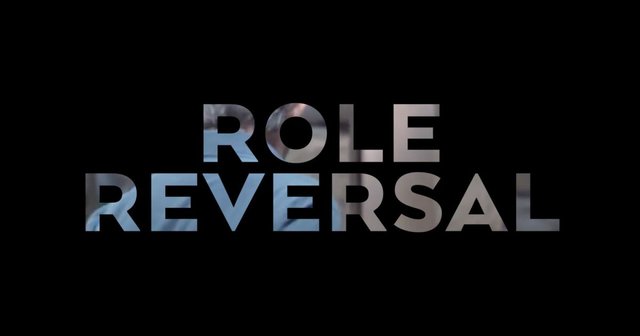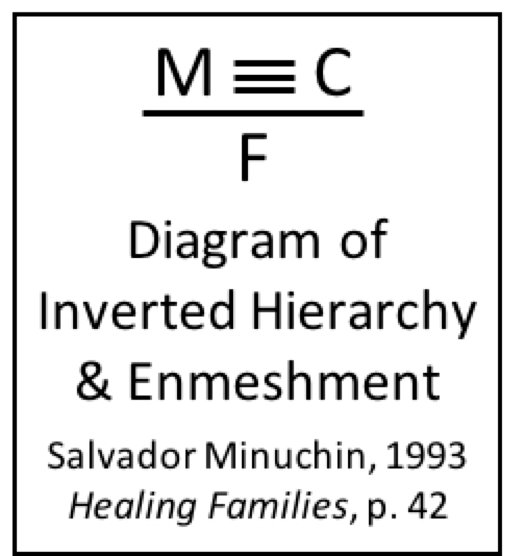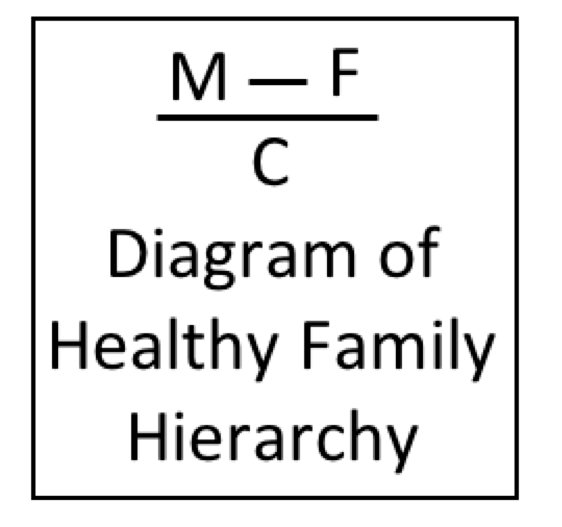Attachment Based Parental Alienation
A Scientifically Based Model of "Parental Alienation"
Understanding the Pathology Role-Reversal Relationship

Courtesy Google Images
A role-reversal relationship is one in which the child is used to meet the parent’s emotional and psychological needs. In normal and healthy parent-child relationships, the child uses the parent to meet the child’s emotional and psychological needs. In a normal and healthy parent-child relationship, the parent is said to act as a “regulatory object” for the child.
In a normal and healthy parent-child relationship, when the child becomes upset and distressed (dysregulated), the parent acts in soothing and structuring ways to bring the child back into an emotionally and behaviorally organized and regulated state. The parent acts as a “regulatory object” – also called a “regulatory other” – for the child. This is normal and healthy. The child is using the parent to meet the child’s needs. The parent is an external “regulatory other” for the child.
In a role-reversal relationship, however, this normal and healthy parent-child relationship is turned upside down. In a role-reversal relationship, the parent uses the child to meet the parent’s emotional and psychological needs. In a role-reversal relationship, the parent uses the child as a “regulatory object” to stabilize the parent’s emotional and psychological state.
When the parent is upset and distressed, the child responds in ways that soothe the parent, keeping the parent in an organized and regulated state. The child becomes an external “regulatory object” for the parent. A role-reversal relationship is extremely pathological and damaging to the healthy emotional and psychological development of the child. It robs the child of self-authenticity and damages self-structure development. Instead, in a role-reversal relationship, the child continually monitors the parent’s emotional and psychological state and must become who the unstable parent needs the child to be in order to keep the parent in an emotionally and psychologically organized and regulated state.
In clinical and developmental psychology, a role-reversal relationship is considered a psychological “boundary violation” that violates the child’s psychological integrity. At its more extreme, a role-reversal relationship is essentially a form of psychological incest in which the parent psychologically violates and intrudes into the psychological integrity of the child so that the parent can meet the parent’s own emotional and psychological needs by using the child as a “regulatory object” for the parent’s fragile and damaged emotional and psychological state.
A role-reversal relationship is extremely pathological.

Inverted Family Hierarchy
In a healthy and normal-range family, parents occupy positions of executive leadership within the family hierarchy. Parents have more knowledge than children. Parents have more experience than children. Parents have better judgement than children. Parents therefore healthy-hierarchy occupy positions of executive leadership within the family.

That is a healthy family hierarchy.
In a healthy and normal-range family, children cooperate with the executive leadership provided by parents. Children express wants and desires, but children also cooperatively defer to the executive leadership of parents. This represents a healthy family hierarchy.
In a healthy family hierarchy, parents judge children’s behavior as appropriate or inappropriate, and parents deliver consequences (rewards and punishments) based on parental judgements of children’s behavior. This reflects a normal and healthy family hierarchy.
An inverted family hierarchy, however, flips the normal and healthy family hierarchy upside down, so that children become empowered into positions of executive judgement OVER parents. In an inverted hierarchy, children are empowered to judge parents’ behavior as appropriate or inappropriate, and children are empowered to then deliver inverted-hierarchy“punishments” to parents based on child-judgments of the parent. The normal and healthy family hierarchy is flipped upside down.
An inverted hierarchy is caused by either of two possibilities:
1.) Parental Abdication of Power: The judged parent is not exercising appropriate parental authority and executive leadership and the parent has instead abdicated parental authority and position in the hierarchy to the child.
2.) Cross-Generational Coalition: The child is drawing power to judge a parent from a hidden cross-generational coalition in the family that the child has formed with an allied parent against the other parent. Through the covert and hidden alliance with the supposedly “favored” parent, the allied parent is empowering the child in the family hierarchy to an elevated position above the other parent, in which the child feels “entitled” to judge the adequacy of the parent.

Courtesy Google Images
A cross-generational coalition represents a child being “triangulated” into the inter-spousal conflict by the allied (and supposedly “favored” parent), thereby turning a two-person (spouse-spouse) marital conflict into a three-person (spouse-child-spouse) triangulated conflict in which the child is caught in the middle of the spousal conflict, a pawn in the inter-spousal conflict.
In the general popular culture, the construct of “triangulation” is called “putting the child in the middle” of the spousal conflict – which generally involves one parent (the allied and supposedly “favored” parent) manipulating the child into “choosing sides” in the inter-spousal conflict.
The function of the cross-generational coalition is to allow the allied and supposedly “favored” parent to divert spousal anger at the other spouse through cutoff from the child. The child is being used by the allied parent to meet the allied parent’s own emotional and psychological needs in the inter-spousal conflict with the other spouse.
The renowned family systems therapist, Jay Haley, refers to a cross-generational coalition as a “perverse triangle” because the formation of a cross-generational coalition represents a “boundary violation” involving a “role-reversal relationship” in which the parent is using the child to meet the parent’s emotional and psychological needs.
Empowering the Child
In the psychologically incestuous relationship of a parent’s “boundary violation” of the child’s psychological integrity, the parent first manipulates the child into a “perverse” cross-generational coalition, and then empowers the child in the family hierarchy, creating the inverted family hierarchy in which the child is empowered to judge the adequacy of the other parent.
The tell-tale signs of the “perverse triangle” of the cross-generational coalition by an emotionally needy parent using the child to meet the parent’s needs, are:
1.) A role-reversal relationship in which the child is being “triangulated” into the inter-spousal conflict in order to allow one parent to divert this parent’s spousal anger toward the other spouse through the child.
2.) An inverted family hierarchy in which the child is empowered into an elevated position in the family of judging the adequacy of a parent.
3.) The empowerment of the child by the allied and supposedly “favored parent” who is using the child in the “perverse” cross-generational coalition to meet the parent’s emotional and psychological needs.

Courtesy Google Images
The psychologically incestuous relationship created by the “boundary violation” of the cross-generational coalition is typically offered in the refrain: “We need to listen to the child.”
In a normal and healthy family, parents occupy positions of executive leadership. Parents are responsible for their children’s behavior. If the child is disrespectful to a teacher at school, the teacher sends a note home to the parent who punishes the child because the parent takes responsibility for not teaching the child appropriate social behavior.
In a normal and healthy family, parents take responsibility. Parents are in the role of executive leadership, parents accept the role of executive leadership, and parents exercise the role of executive leadership within the family.
In the perverse relationship of the cross-generational coalition, the allied parent is psychologically manipulating and controlling the child to meet the parent’s own emotional and psychological needs. In the perverse relationship of a cross-generational coalition, the allied parent abdicates the role of parental executive leadership, elevating the child into this parental role, while the allied parent denies normal-range parental responsibility and alleges parental incompetence in altering the child’s behavior, typically in the refrain of: “What can I do? I can’t force the child to…”
Normal-range and healthy parents exercise parental executive leadership and do not abdicate parental leadership to the child. Normal and healthy parents are expected to show parental guidance and leadership to teach their children not to disrespect teachers at school, not to bully other children, and to develop appropriate responsibility for homework and chores around the house.
This is is not called “forcing the child” to be respectful, to not bully other children, to do homework and chores – this is called “parenting.” Normal-range and expected parenting.
The abdication of “parental responsibility” by pleading selective parental incompetence is disingenuous – and ALL healthy and normal parents see this clearly – because we are normal and healthy parents. The ONLY people who do not see this are people who do not understand parenting – who have their own agenda in working through their own childhood family relationship issues.

Courtesy Google Images
Every single normal and healthy parent understands the expected role of normal and healthy parental executive leadership in the family. It is our job as parents to teach our children to be respectful, kind, and cooperative with authority. This is not called “forcing our children” – this is called “parenting” our children. Every normal and healthy parent understands this. Boundary Violations A role-reversal relationship, in which the child is being used to meet the parent’s emotional and psychological needs, represents a psychological boundary violation of the child’s psychological integrity – and a boundary violation of the child’s psychological integrity is a form of psychologically incestuous parent-child relationship.
That’s why Jay Haley refers to the cross-generational coalition as a “perverse triangle.” The pathology of incest festers and is allowed to grow in the dark recesses of hidden secrecy within the family. No one sees into the darkness of the family secret to identify the extremely pathological and repulsive parental pathology that is dominating and damaging the child’s psychological core-self integrity.
The treatment of incest begins with exposing it from its secrecy; exposing it from its hiding. This is true for the reprehensible pathology of physical incest, and this is true for the reprehensible pathology of psychological incest, the “perverse” role-reversal relationship of the cross-generational coalition in which the parent violates the child’s core psychological integrity in order to use the child to meet the parent’s own emotional and psychological needs.
Trans-Generational Transmission of Trauma
The attachment-related pathology of AB-PA represents the trans-generational transmission of attachment trauma from the childhood of the allied narcissistic/(borderline) parent to the current family relationships, mediated by the personality disorder pathology of the parent, that is itself a product of this parent’s childhood attachment trauma.
The current symptoms of a child rejecting a parent are the echo – a reflection from earlier times – of an attachment-related trauma that entered the inter-generational attachment system of the family a generation or two prior to its current manifestation in the “perverse” cross-generational coalition evidenced in “parental alienation.”
The pathology of “parental alienation” is a ripple of trauma from generations gone by, yet carrying the same trauma-themes of the original trauma experience a generation or two earlier – the role-reversal use of the child to meet the parent’s needs – the boundary violation – the betrayal and abuse of the child’s love for a parent.
Themes of childhood trauma echoing across the generations, twisted into the current themes of “listening to the child” and “forcing the child” to do things against the child’s will – that were once accurate, but are now simply twisted echos of the childhood trauma from generations ago. An echo of inter-generational childhood trauma.
The trauma pathogen of damaged information structures that are locked into the inter-generational attachment networks seeks to remain hidden from view, so it can enact its vile malevolence – punish the parent – the parent deserves to be punished. Echoes from the past, traveling across generations, damaging love and bonding. Creating the pathology of the narcissistic and borderline personality, creating the pathology of “parental alienation” – lost bonds of love and affection.
The pathology of the cross-generational coalition seeks to remain a hidden family pathology – weaving a false story of the other parent’s supposed “badness” that justifies the child’s rejection. A hidden psychological abuse of the child in a “perverse triangle.”

Courtesy Google Images
I see the pathogen. I know what it is. I’ve seen it before – when I worked in the foster care system. Then, I looked into the abyss of the childhood trauma. Now, I see its echo, a dark and malevolent echo of childhood trauma from generations past. This type of trauma pathogen seeks to remain hidden. It derives all of its malevolent power to inflict its terrible psychological damage onto the child by remaining a hidden family pathology – a family secret.
No. This stops. It must remain hidden no more. We are exposing it – so we can protect the current children from the “perverse” role-reversal relationship and psychological boundary violation of their manipulative use by parents to meet their parent’s own damaged emotional and psychological needs. To the allies of the pathogen, to the flying monkeys who seek to prevent us from exposing this pathogen to the light – consider carefully what you are doing, because you’re furthering the echo transmission of a very malevolent and destructive child attachment pathogen.
Wake up. You are NOT protecting children, you are collaborating in the continuing abuse of children in a ripple of childhood trauma across generations. You are hearing the echo of trauma, and your own attachment trauma networks are responding in psychological resonance to the echo, thinking that the echo is real. It’s not. It is a ripple of trauma from generations past. The source trauma that is creating the devastating family pathology of “parental alienation” – in which families are torn apart and loving parent-child relationships are destroyed – is from a generation or two earlier.
The current manifestation is not real, it is an echo of the earlier trauma. It is time to heal the children. It is time to heal the trauma that is traveling across time, embedded in the family’s inter-generational attachment networks, a trauma being passed across generations of love and bonding. It is time to bring this nightmare family tragedy – this inter-generational nightmare – to an end. The current manifestation of this inter-generational attachment trauma is a false story – a false drama. An echo. It is time to heal this inter-generational echo of trauma. It is time return to the beautiful and wonderful children a normal and healthy childhood of loving and healthy attachment bonds to both parents.
It is time to heal.
Craig Childress, Psy.D. Clinical Psychologist, PSY 18857
Citations: Haley, J. (1977). Toward a theory of pathological systems.
In P. Watzlawick & J. Weakland (Eds.), The interactional view (pp. 31-48). New York: Norton. “The people responding to each other in the triangle are not peers, but one of them is of a different generation from the other two… In the process of their interaction together, the person of one generation forms a coalition with the person of the other generation against his peer. By ‘coalition’ is meant a process of joint action which is against the third person… The coalition between the two persons is denied. That is, there is certain behavior which indicates a coalition which, when it is queried, will be denied as a coalition… In essence, the perverse triangle is one in which the separation of generations is breached in a covert way. When this occurs as a repetitive pattern, the system will be pathological.” (p. 37) Kerig, P.K. (2005).
Revisiting the construct of boundary dissolution: A multidimensional perspective. Journal of Emotional Abuse, 5, 5-42. “The breakdown of appropriate generational boundaries between parents and children significantly increases the risk for emotional abuse.” (p. 6) “In the throes of their own insecurity, troubled parents may rely on the child to meet the parent’s emotional needs, turning to the child to provide the parent with support, nurturance, or comforting (Zeanah & Klitzke, 1991).
Ultimately, preoccupation with the parents’ needs threatens to interfere with the child’s ability to develop autonomy, initiative, self-reliance, and a secure internal working model of the self and others (Carlson & Sroufe, 1995; Leon & Rudy, this volume). (p. 6) “When parent-child boundaries are violated, the implications for developmental psychopathology are significant (Cicchetti & Howes, 1991).
Poor boundaries interfere with the child’s capacity to progress through development which, as Anna Freud (1965) suggested, is the defining feature of childhood psychopathology. (p. 7) “A theme that appears to be central to the conceptualization of boundary dissolution is the failure to acknowledge the psychological distinctiveness of the child.” (p. 8)
“Examination of the theoretical and empirical literatures suggests that there are four distinguishable dimensions to the phenomenon of boundary dissolution: role reversal, intrusiveness, enmeshment, and spousification.” (p. 8) “By binding the child in an overly close and dependent relationship, the enmeshed parent creates a psychological unhealthy childrearing environment that interferes with the child’s development of an autonomous self.
” (p. 10) “Barber (2002) defines psychological control as comprising ‘parental behaviors that are intrusive and manipulative of children’s thoughts, feelings, and attachments to parents, and are associated with disturbances in the boundaries between the child and the parent’ (p. 15) (see also Bradford & Barber, this issue).” (p. 12) “As Ogden (1979) phrased it, ‘It is as if the parent says to the child, if you are not what I need you to be, you do not exist for me’ (p. 16).” (p. 12)
“Rather than telling the child directly what to do or think, as does the behaviorally controlling parent, the psychologically controlling parent uses indirect hints and responds with guilt induction or withdrawal of love if the child refuses to comply. In short, an intrusive parent strives to manipulate the child’s thoughts and feelings in such a way that the child’s psyche will conform to the parent’s wishes. (p. 12)
“In order to carve out an island of safety and responsivity in an unpredictable, harsh, and depriving parent-child relationship, children of highly maladaptive parents may become precocious caretakers who are adept at reading the cues and meeting the needs of those around them. The ensuing preoccupied attachment with the parent interferes with the child’s development of important ego functions, such as self organization, affect regulation, and emotional object constancy. (p. 14)
“There is evidence for the intergenerational transmission of boundary dissolution within the family. Adults who experienced boundary dissolution in their relationships with their own parents are more likely to violate boundaries with their children (Hazen, Jacobvitz, & McFarland, this volume; Shaffer & Sroufe, this volume).” (p. 22) Shaffer, A., & Sroufe, L. A. (2005).
The Developmental and adaptational implications of generational boundary dissolution: Findings from a prospective, longitudinal study. Journal of Emotional Abuse. 5(2/3), 67-84. “Role reversals observed among children with disorganized attachment histories, which may include both controlling/punitive and caregiving behavior patterns, may be attempts at fear mastery and self-protection.” (p. 72)
“In this study the dissolution of generational boundaries was child-specific within the identified families.” (p. 75) “A maternal history of sexual exploitation has emerged as a significant predictor of boundary dissolution at 42 months.” (p. 75)
“Mothers who tend to disregard generational boundaries in interacting with their children are not simply more “warm” than other mothers, but in fact show more conflict or hostility.” (p. 78) “Parent-initiated boundary dissolution in early childhood instantiates a pattern of relationship disturbance in the child. Role reversal is apparent by early adolescence and the available data suggest links to psychopathology in later adolescence, particularly as a result of sexualized behavior observed at age 13.” (p. 80) Beck, A.T., Freeman, A., Davis, D.D., & Associates (2004).
Cognitive therapy of personality disorders. (2nd edition). New York: Guilford. “Various studies have found that patients with BPD are characterized by disorganized attachment representations (Fonagy et al., 1996; Patrick et al, 1994). Such attachment representations appear to be typical for persons with unresolved childhood traumas, especially when parental figures were involved, with direct, frightening behavior by the parent.
Disorganized attachment is considered to result from an unresolvable situation for the child when ‘the parent is at the same time the source of fright as well as the potential haven of safety’ (van IJzendoorn, Schuengel, & Bakermans-Kranburg, 1999, p. 226).” (p. 191)

A very informative article albeit lengthy. Many logical conclusions are oft unnecessarily repeated, contributing to extended reading time.
Resolutions are largely correct. Parents use their children as purpose-giving devices. Failure to articulate one's personal relation to being in general, is the origin of such malfunctions.
Parenting is and should be a matter of adequately propagated education.
I contest though. Is executive parental leadership a "healthy" instructional and institutional trait? Shouldn't the child be included, as an implied equal at first and furthermore in progress be fully admitted as one, in the decision making process of this "familiar" equity group? At which point and up to what level does this structrual rigidity remain in operation. Besides all the formulative aspects of parenting, shouldnt the notion of inclusiveness be admitted into this cycle of inner workings? Isn't it a sign of parent to child respect when the child is allowed to participate (even in the heinous act of taking sides) in a constructive personal dialogue which influences the development of self referential tools of analysis? Doesn't the child become adequately self aware when is permitted to shift away from formulaic parental wisdom?
Appreciated.
Tl;DR
your children could be more adequate evaluators than you
@zenmotherfucker You are Up-Voted! Thank you for your critical analysis! I am now informed! I don't believe most children have the opportunity to become adequately self aware and most family relationships are paradigm driven. Belief systems are not addressed here but nonetheless, children rely on parents for unconscious protection and without a role model, will display their lack of information or lack of ability to negotiate to the degree they have not been adequately parented.
Eh ... it's sad when you voice it but I've condensed it all down to this aphorism:
"Parents fuck up their children"
This is the definition of a "make it or break it" conundrum
@zenmotherfucker Yep! And they are unaware that they're doing it. I never dreamed it would happen to mine and now I find myself trying to reverse the damage to my kids, but with some success. I had to ask myself: "My Kids?" "How Did This Happen?" I was in la la land and blind to the signs. Up-Voted and Followed
Upvoted and following :) :)
post was resteemed by @wayforhappiness !
@wayforhappiness Thank you and you are up-voted and followed
well done knowledge-trust, once again!
Great write up. Thank you for sharing. Resteemed.